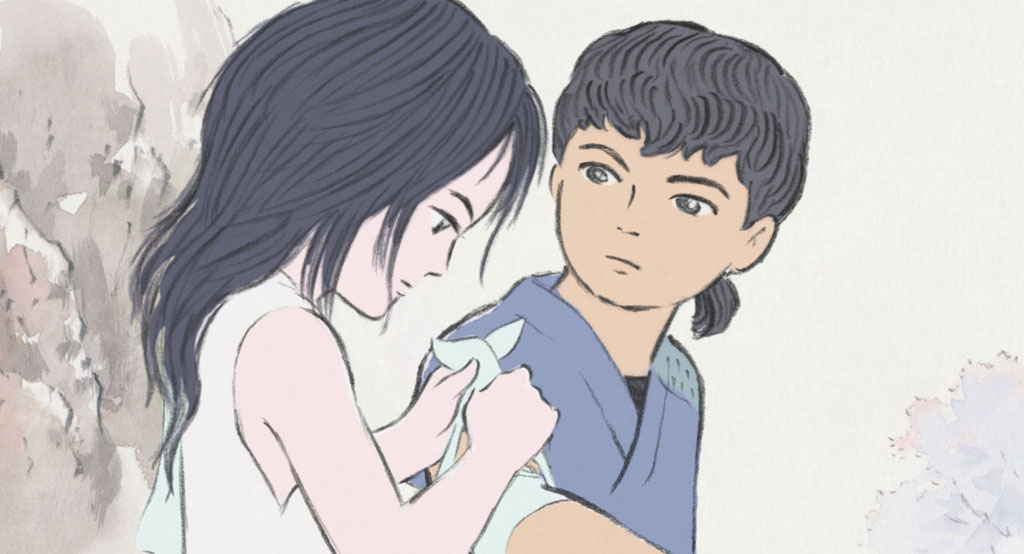A staple of Japanese folklore for 10 centuries, Princess Kaguya is now an anime eight years in the making from Isao Takahata, the 78-year-old co-founder (with Hayao Miyazaki) of Studio Ghibli. So there’s a lot of national and industrial history built into this rather lumbering, reverent tale. Frame by frame, it’s never less than lovely to look at. However, whether considered as storybook pages or animation cels, you want this ossified undertaking to flip faster—which Takahata (My Neighbors the Yamadas), in likely his last movie, simply refuses to do. It takes its time, and then some.
Kaguya is a foundling, that favorite orphan figure of folklore and the Bible. A poor bamboo cutter and his wife raise the girl, discovered inside a glowing bamboo stalk, who rapidly and unnaturally grows from doll-size to babbling cherub to teenage beauty in a few short seasons. Takahata’s main theme—I won’t speak for the source tale—is the innocence of Kaguya’s childhood in the hills versus the palace intrigue that awaits in the city. Childhood is clearly the preferred milieu. All Studio Ghibli products are smotheringly nostalgic, pre-industrial, and pre-Western, and Princess Kaguya is no exception. From bobble-headed infant to woodland sprite, Kaguya and her village pals cavort through idyllic seasonal tableaux. The backgrounds are generally static, like delicate sumi drawings, while the actual animation is kept to a minimum. The kids move trough the groves, smudgy shadows pass overhead, and the boughs gently drop their blossoms. Time barely figures, even as Kaguya prodigiously sprouts.
The court rituals of the city—made possible by the bamboo cutter’s continued magical bounty—are treated more for comedy. Being groomed for an aristocratic match, Kaguya protests her plucked eyebrows and blackened teeth. When five silly suitors come calling, she stalls for time by assigning them the most impossible tasks imaginable. Perhaps because of her accelerated childhood, she—along with Takahata’s animators—yearns for the playful forest, so free from civilized protocols. When the emperor comes courting, however, his is an offer she can’t refuse.
If Kaguya has a hearty village swain (Sutemaru) who loves her most, and most intrepidly, this isn’t the sort of cartoon where a happy ending might be monetized into a Broadway musical. No Ariel or Merida, she owes a fateful celestial debt that Takahata fails to translate for us. Opens Fri., Oct. 24 at Harvard Exit. Rated PG. 137 minutes.
bmiller@seattleweekly.com








